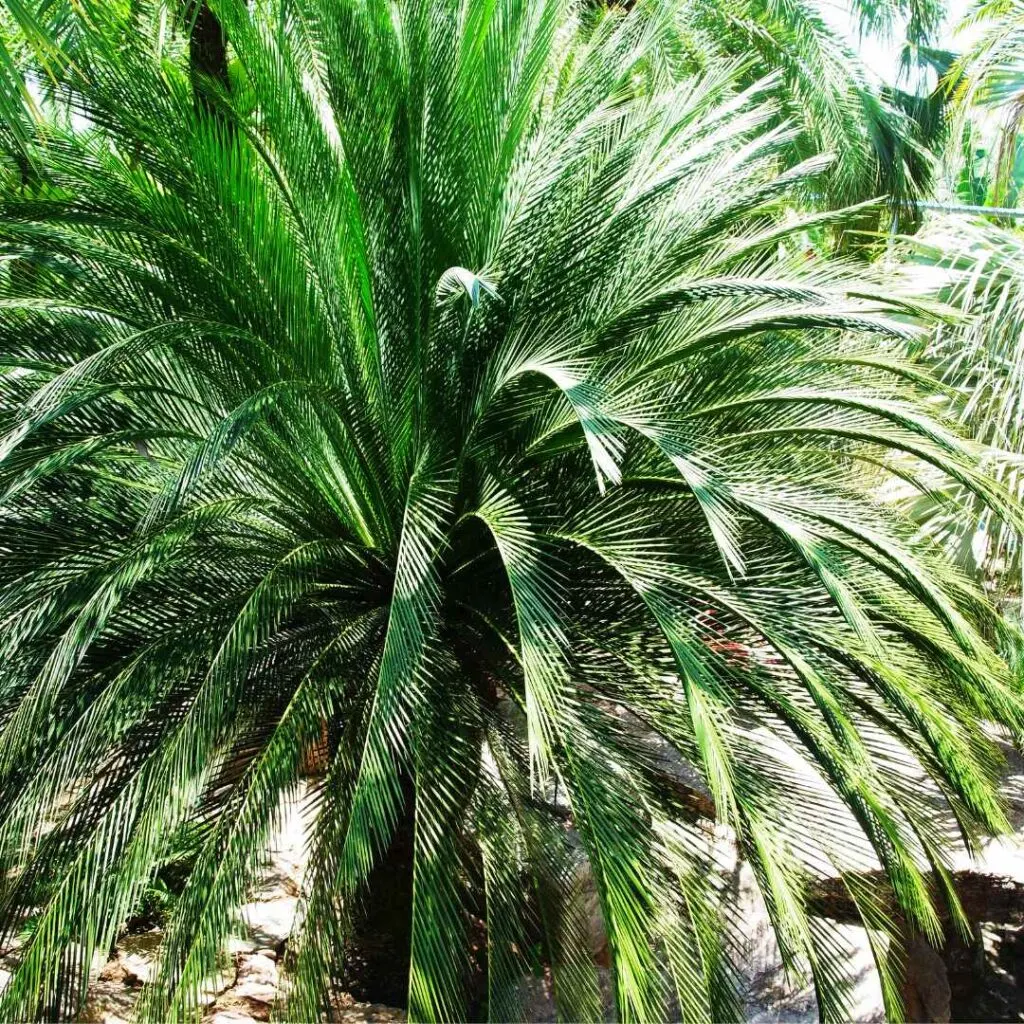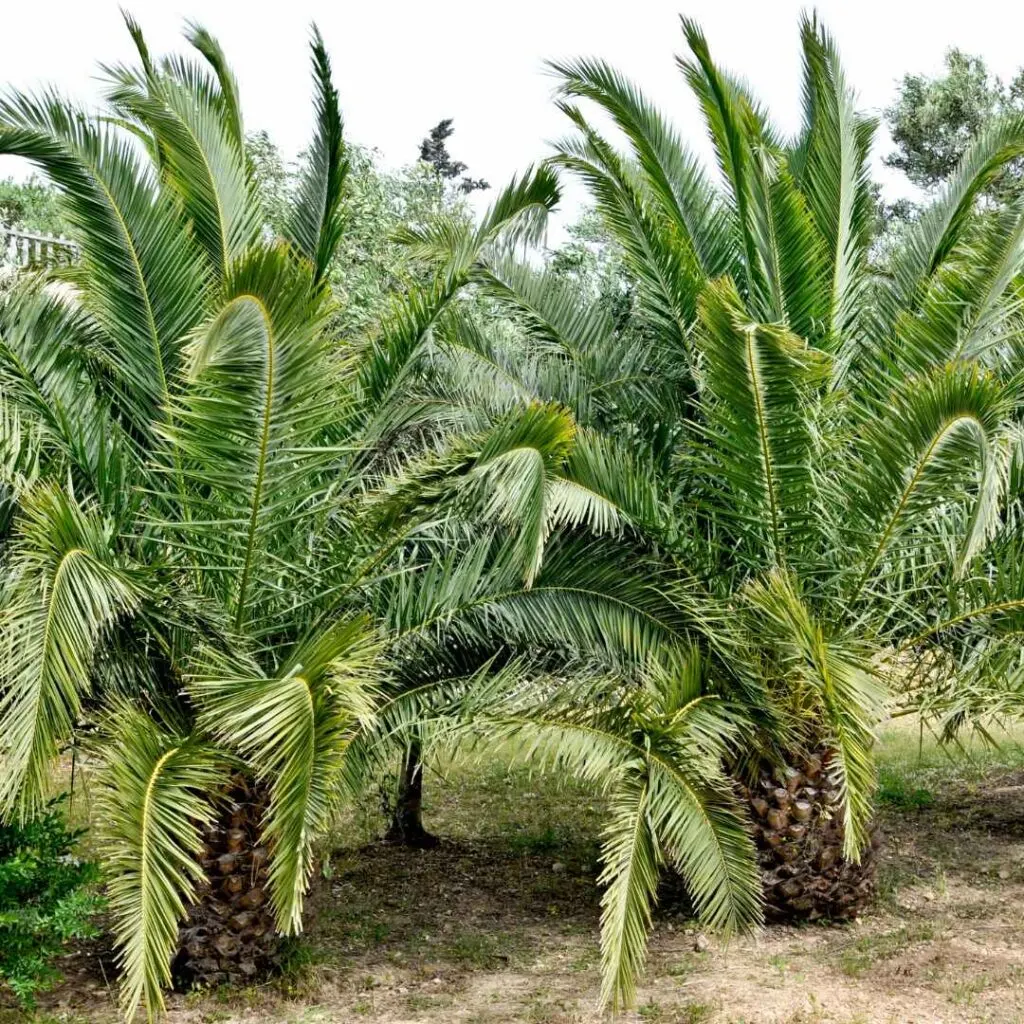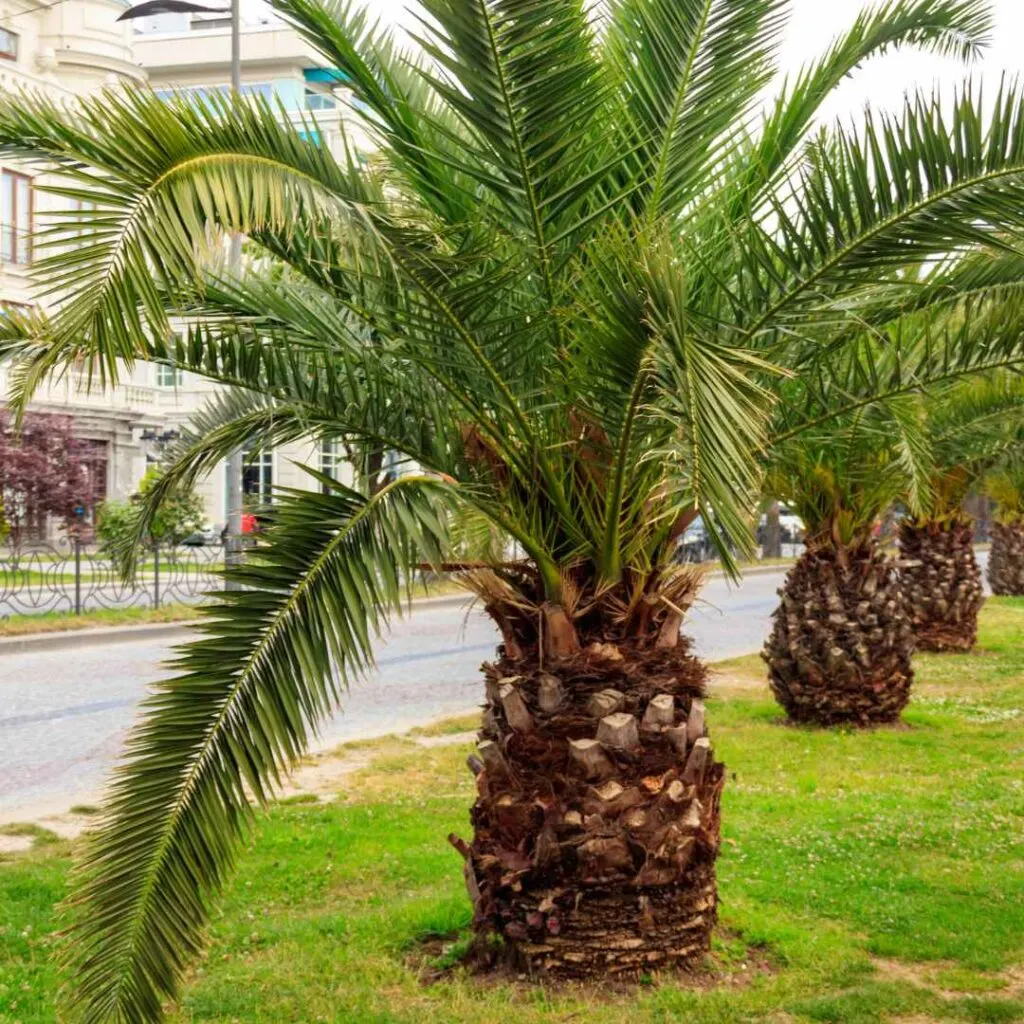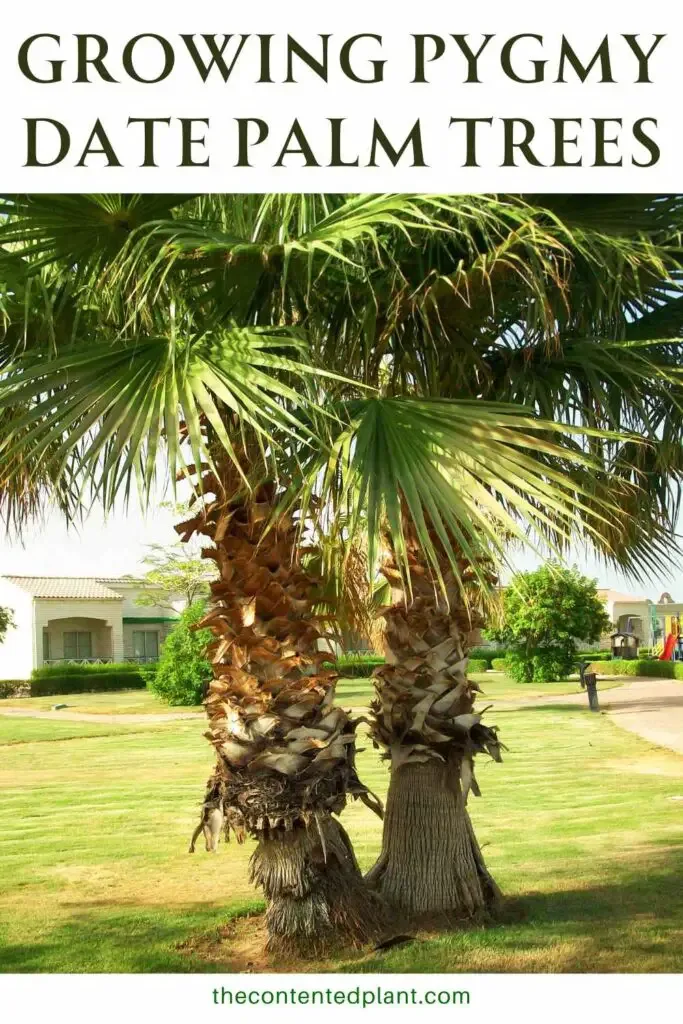Pygmy date palm trees, also known as Robellini palms are a dwarf variety of palms that are most commonly used in landscaping. They can be grown individually, or in clusters, making them a versatile option for those who live in hot, humid southern climates. Though they can be grown indoors if you have the room and desire, they do require very specific environments to thrive which makes them a challenging undertaking for an indoor tree.
They are native to the hot tropical climate of the Asian forests and will need many hours of full sun, moist soil, and high humidity. These trees may be dwarf, but they still grow very large and have a heavy trunk once full maturation has been reached making them an extremely imposing presence for the average home.

Caring for the Robellini palm
Due to their tropical origins these trees will need to be grown in very specific conditions in order to thrive. They will be self sustaining as an outdoor tree in the correct environment and zone (USDA 9-11), but if you would like to make them a house tree they will need a lot of attention and a large room.
High humidity and warm temperatures are a must for these trees as well as constant watering in order to keep their roots moist and healthy. Sunlight is another very important aspect of care for the pygmy date palm, but this will differ depending where you are growing them and where you live.
| Sun + Light Exposure | Many hours of full sun when grown indoors or in mild climates. Many hours of partial sun when grown outdoors in intense climates with direct sun exposure. |
| Soil | A balance of slightly acidic to slightly alkaline. Well draining, but moist. |
| Water | A regular watering schedule is needed. Watering deep through the soil and allowing the soil to partially dry between waterings. |
| Temp + Humidity | Warm, humid environments and protection from cold and frost. These are tropical trees and will not tolerate dry air for extended periods. |
| Full Size | They are slow growers, but will reach 6-12 feet making them a large presence. |
| Pruning + Fertilizing | Pruning needs to be done by someone who understands palms so as not to damage the tree. Fertilizing will be beneficial due to their slow growth. |
Palms require a lot of sunlight
The amount of sunlight exposure is a lot for palm trees, but this will differ a bit depending where your tree is being grown.
- Indoors the pygmy date palm will need at least 6 hours a day of very direct, full sun exposure. Large windows that will bring in as much sunlight as possible are where the palm tree should be placed. The fronds will begin to wilt and look sickly if they are not pulling in enough sunlight.
- Outdoors these palms will thrive in full sun exposure if they are grown in slightly milder climates or zones. If they are in hot regions with intense sun like Florida, it’s best to protect them from the afternoon rays and provide many hours of partial sunlight instead.
Containers are a good option both indoors and outdoors for personal gardens
Most often Robellini palms are planted as permanent landscape fixtures by professional companies that understand the nature and needs of palm trees. If you are looking to add these dwarf palms to your personal garden, it is recommended that you grow them in containers for a few reasons.
- Over wintering and correct light exposure are common challenges that the average gardener can experience with palms. Growing them in containers allows you to move the small trees around if the sunlight exposure needs to be adjusted, or move them indoors if the winter weather becomes too extreme. Palms can not survive frost or freezing temperatures.
- Their slow growth makes them easy to use as planter focal points and they don’t require frequent re-potting since they grow so slow. This makes them wonderful additions to garden or walkway entrances, poolside botanical features, and even front porch container focal pieces.

Pruning and fertilizing the pygmy date palm
One very important thing to keep in mind is that palms can be severely damaged due to improper pruning. They benefit from pruning but it is recommended that this be done by professionals who are educated in the nature of palms and understand how to properly prune them.
Young palms and seedlings will need to be fertilized once a month until they are well established and showing strong growth patterns. Fully matured palms will require fertilizing up to 3 times a year on average using a balanced fertilizer specific to palms. This will help encourage faster growth and strong, vibrant fronds.
How to propagate a Robellini palm
Propagation can be done once the matured tree is producing offshoots or ‘suckers’ and is basically the same thing as rhizome division.
- Using sharp pruners or a plant knife, separate the offshoot from the mother plant making sure there are strong roots attached.
- Place the young plant in a small pot that is roughly 2″ larger in diameter than the root structure. Plant in well draining moist potting mix with plenty of organic material to encourage drainage.
- Place the young plant in an area that receives many hours of bright but indirect sunlight.
- Once the palm has matured and become well established (usually a couple of months) it needs to be moved to any area where it receives many hours of direct sunlight.
Common issues, challenges, and needs of the pygmy date palm
Once established and thriving in the correct environment, these palms are fairly self sustaining and require only the correct basic care. They are slow growers and don’t need frequent repotting which makes them a low fuss option if you are looking for a stately palm for your outdoor garden, patio, or large indoor living space.
However, even these palm trees have some potential challenges and problems if not properly cared for. Here are some common things to remember and watch out for if you want to add the Robellini palm to your collection.
- Overwintering will be an absolute necessity for these palms if the temperatures drop to the mid 40’s and frost develops. Palms cannot withstand extreme cold or frost and will die if exposed to these extremes for too long. If your palms are permanently planted and cannot be moved indoors they will need to be covered securely with plastic in the event of a freeze.
- Robellini palms are susceptible to common pests like scale and spider mites. If you notice activity on your palms be sure to take action as soon as possible. Read our in depth post on how to treat these common pests effectively.
- Brown or yellowing fronds indicate that the palms are in distress and need a bit more care. Brown fronds are usually an indication that the palm needs more water; it can also indicate that the humidity is too low for the palms. Yellowing fronds point to nutritional deficiencies in the soil and would likely benefit from a dose of fertilizer and possibly soil recomposition.

Can pygmy date palm trees produce fruit?
Yes, these mini palms do have the ability to produce edible fruit once fully matured. Only the female trees will grow these fruits and it will take time. The blooming season is summer, and you will see small yellow flowers followed by tiny purple fruits that look like figs.
Where can I source a pygmy date palm?
If you live in the right zone (USDA 9-11) you will able to find these palms in many of your local garden centers, nurseries, or even landscape companies. If you do not live in these zones they will not be available locally, and you would need to look at ordering one online.
Etsy and other online websites can be used to source a variety of plants from dedicated hobbyists, but be sure to do your research to ensure you are selecting a strong, healthy plant from someone who knows palms
If you are interested in palms be sure to check out these other ones that we have featured on the blog
- Parlor Palms-They make beautiful additions to hallways and entryways
- Bamboo Palms-Very similar to the parlor palm
- Cat Palm-A deep striking green palm
- Majesty Palm-Another beautiful stately option for your home
- Ponytail Palm-This fun palm grows in a large plume from the trunk
Follow Us:
Find us on YouTube, Instagram , Pinterest and TikTok! We love to Plant chat. We also comment, like and occasionally share your content to our daily stories. We’d love to see your plants. Share your joy in your houseplants. Happy Planting!

